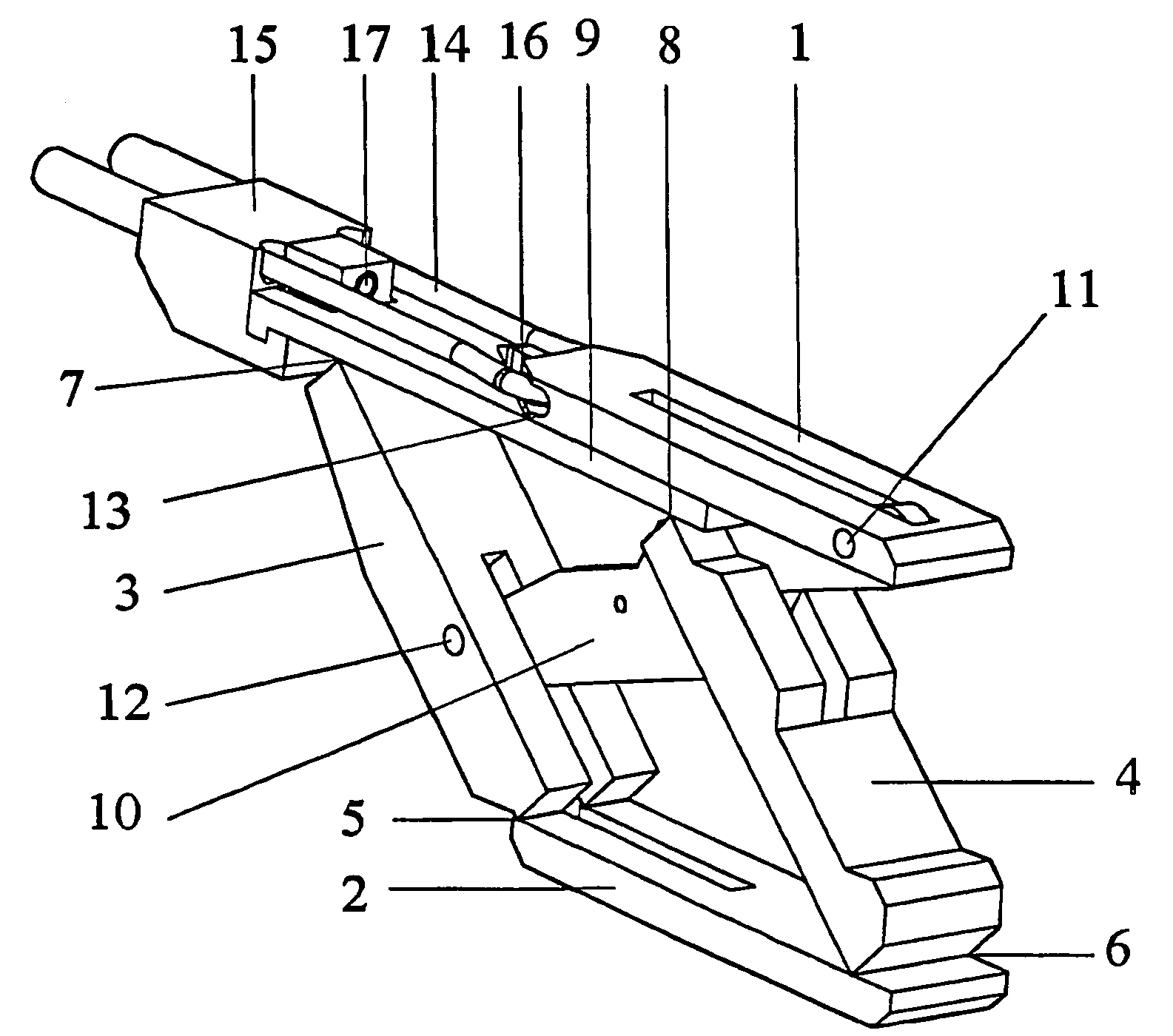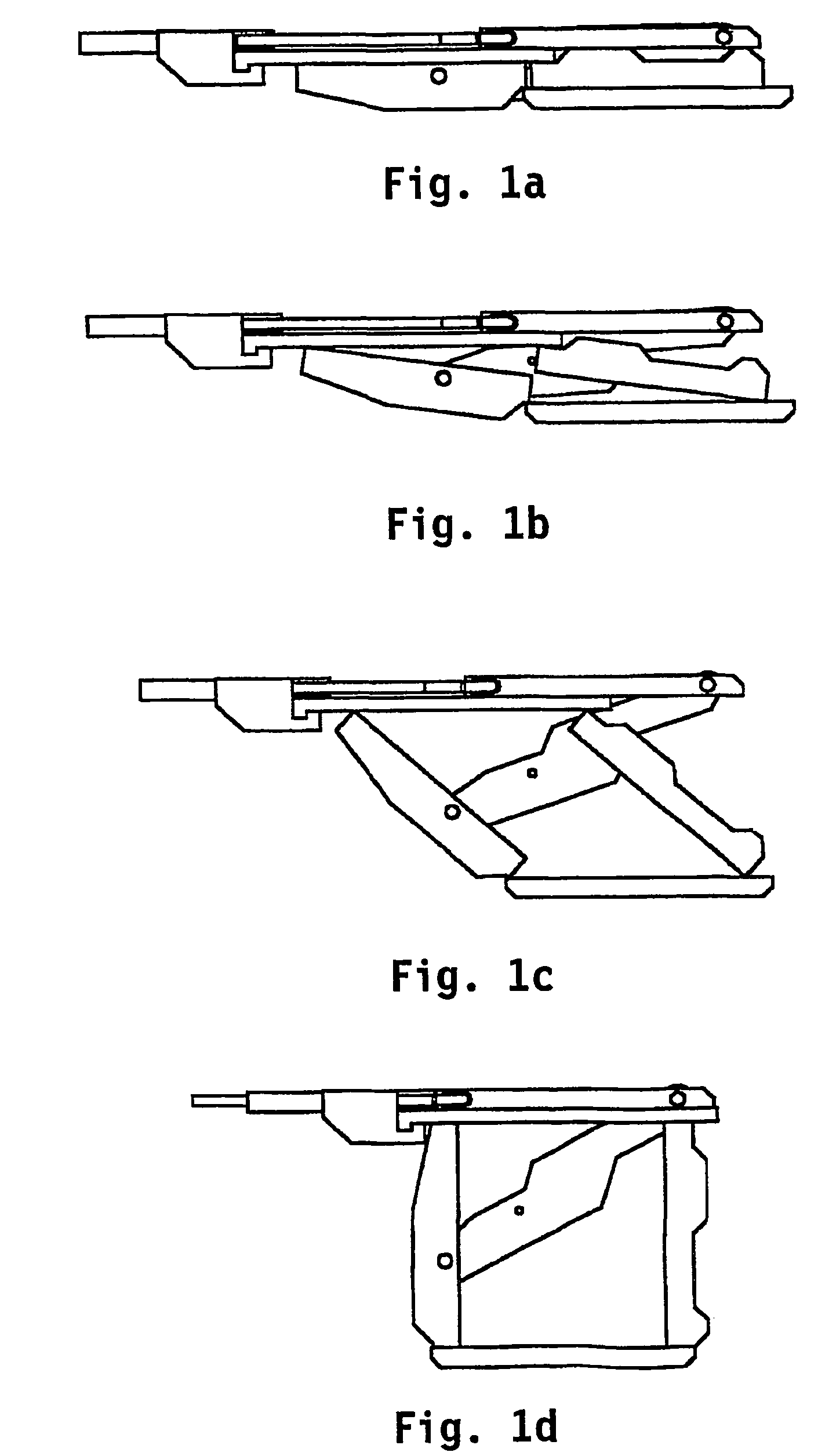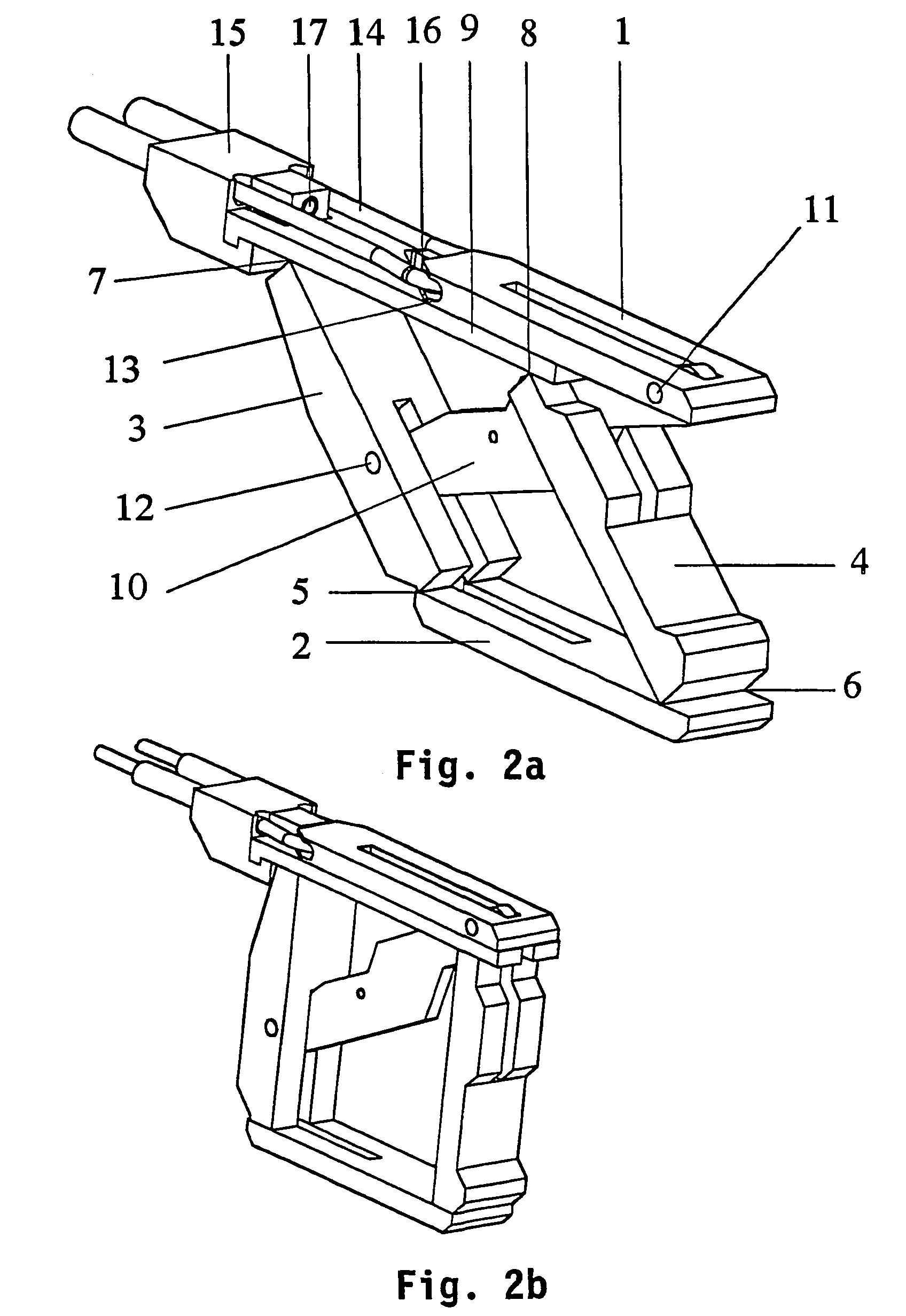Collapsible and expandable instrument for insertion in a dorsal vertebra
a dorsal vertebra and expandable technology, applied in the field of instruments, can solve the problems of reducing the recovery time of patients, affecting the recovery of patients, and few suitable techniques for restoring the height of damaged vertebrae, and achieve the effect of short recovery time for patients
- Summary
- Abstract
- Description
- Claims
- Application Information
AI Technical Summary
Benefits of technology
Problems solved by technology
Method used
Image
Examples
Embodiment Construction
[0030]In FIG. 2a, numeral 1 indicates a first, upper, elongated contact element. Numeral 2 indicates a second, lower, likewise elongated contact element. Two parallel arms 3 and 4 are pivotally connected to the lower contact element 2 by means of hinges 5 and 6, respectively. At their other ends, the arms 3, 4 are pivotally connected, at points 7, 8, respectively, to a beam-shaped element 9 which is slidably connected to the bottom side of the upper contact element 1. In its end position as shown in FIG. 2b, a lever 10 is connected to the upper elongated contact element 1 with one end by means of a pivot 11, approximately at the level of parallel arm 4. The lever 10 is connected to the parallel arm 3, approximately at the centre thereof, with its other end by means of a pivot 12.
[0031]The upper contact element is provided with a cavity 13, through which a cord 14 is passed, the free ends of which are fixed in a detachable tensioning device 15 connected to the beam-shaped element 9, ...
PUM
 Login to View More
Login to View More Abstract
Description
Claims
Application Information
 Login to View More
Login to View More - R&D
- Intellectual Property
- Life Sciences
- Materials
- Tech Scout
- Unparalleled Data Quality
- Higher Quality Content
- 60% Fewer Hallucinations
Browse by: Latest US Patents, China's latest patents, Technical Efficacy Thesaurus, Application Domain, Technology Topic, Popular Technical Reports.
© 2025 PatSnap. All rights reserved.Legal|Privacy policy|Modern Slavery Act Transparency Statement|Sitemap|About US| Contact US: help@patsnap.com



